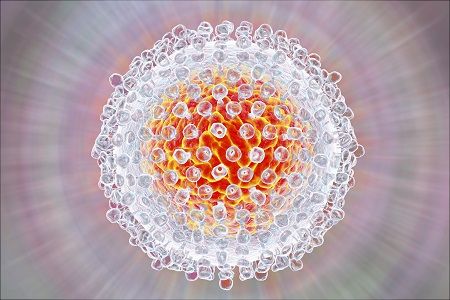Article
Ribavirin Plasma Levels Predict SVR for Hepatitis C Infection
Author(s):
Ribavirin steady-state plasma level rather than weight-based dose was found to be an independent predictor of sustained virologic response in patients with HCV.

The largest prospective study of ribavirin steady-state plasma levels in hepatitis C (HCV) patients in the current era of direct acting antiviral (DAA) treatment indicates that optimizing drug plasma levels rather than dosing by body weight promotes sustained virologic response (SVR).
David Burger, PharmD, PhD, Radboud Institute of Health Sciences, Nijmegen, the Netherlands along with colleagues notes that although DAAs have supplanted pegylated-interferon alfa (PEG-IFN)-based treatment, the addition of ribavirin continues to be helpful for selected patients if optimal plasma levels are achieved.
The researchers found that higher RBV steady-state plasma levels led to a “1.8-fold increase in SVR in DAA-treated patients.”
"This demonstrates that higher RBV plasma levels are effective to improve response rates, particularly in difficult-to-cure patients with a lower a priori chance of achieving SVR," researchers wrote.
Burger and colleagues followed 183 patients with chronic HCV infection who were treated with interferon-free DAA regimens and ribavirin in the period from January 2015 to May 2016. Most patients received the addition of ribavirin because of having 1 or more conditions such as cirrhosis which marked them as difficult-to-cure.
Overall, 163 patients (89%) achieved SVR at 12 weeks. There was no statistically significant association of SVR with any of several patient characteristics other than steady-state plasma level, including cirrhosis status, hepatitis B and HIV co-infection status, or mean ribavirin dose.
The association of SVR with ribavirin steady-state plasma levels had an unadjusted odds ratio [OR] of 1.86 (95% confidence interval [CI] 1.14-3.04). Additional analysis determined that higher ribavirin steady-state plasma level remained an independent predictor of SVR (OR 1.79, 1.09-2.93). The researchers established the optimal steady-state plasma level to attain SVR without increasing risk of anemia at 2.28-3.61 mg/L.
The lack of association of SVR with ribavirin dose reflects the wide variance in plasma levels between individuals receiving the same weight-based dosage. The researchers found a remarkable example of this, in patients with compromised renal function receiving the same mg/kg starting dose as those with normal renal function, and subsequently requiring dose adjustments to reduce toxicity.
Burger and colleagues acknowledge the difficulty in dosing to achieve optimal plasma levels of ribavirin in a 12 week DAA regimen, when steady state is not reached for 8 weeks. Although one approach is to dose up to toxicity, the researchers suggest that earlier therapeutic drug level monitoring is feasible, and its cost is dwarfed by the expense and patient injury if retreatment is required when SVR is not attained.
One pharmacokinetic study cited by Burger and colleagues indicates that a ribavirin plasma level of at least 1.29 mg/L at 2 weeks corresponded to adequate steady-state levels at week 8.
The putative association of SVR with ribavirin plasma level is not without detractors. Marianne Martinello, PhD, Kirby Institute, University of New South Wales, Sydney, Australia, and colleagues reported in 2016 on their assessment of ribavrin plasma levels and the efficacy of its combination with sofosbuvir (Sovaldi, Gilead) without interferon.
"We found no evidence of an association between ribavirin plasma concentrations and relapse suggesting that, as opposed to interferon-based therapy, suboptimal ribavirin plasma concentrations did not explain the high rate of virological failure with this regimen," researchers wrote. "Our findings suggest that in interferon-free ribavrin-containing regimens, concerns over ribavirin dosing to achieve previously determined target plasma concentrations are unnecessary."
Burger and colleagues discount this report, pointing out that it had a small sample size of 47 treatment naїve, predominantly genotype 1-infected noncirrhotic patients, and that RBV plasma samples were retrospectively analyzed.
"Our study, however, represents a large real-world cohort of mainly difficult-to-cure patients on various DAA combinations with prospectively analyzed plasma samples and SVR rates similar to clinical trials and real-world cohorts," researchers wote.
The study, "Ribavirin steady-state plasma level is a predictor of sustained virological response in hepatitis C—infected patients treated with direct-acting antivirals," was published online in Alimentary Pharmacology and Therapeutics last month.





